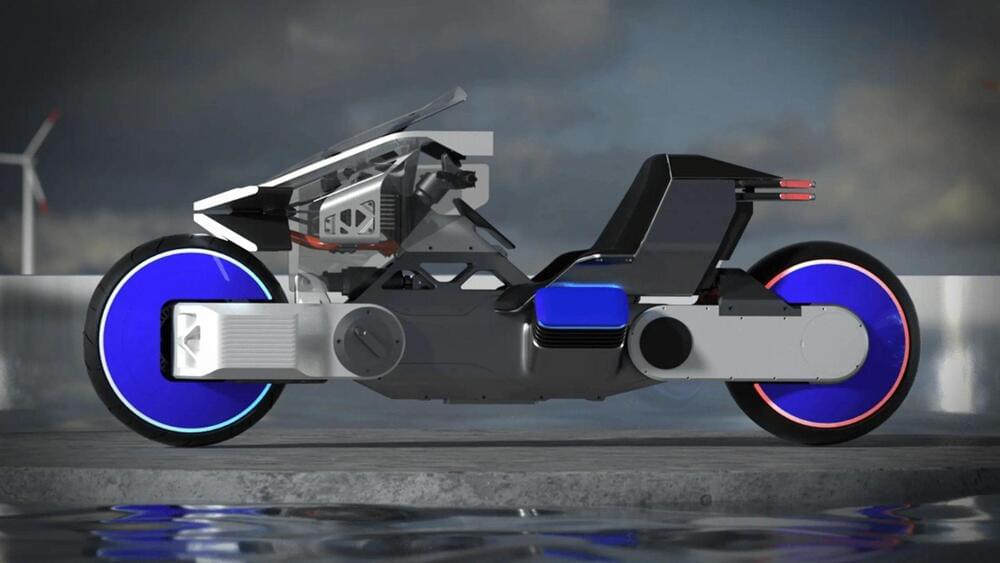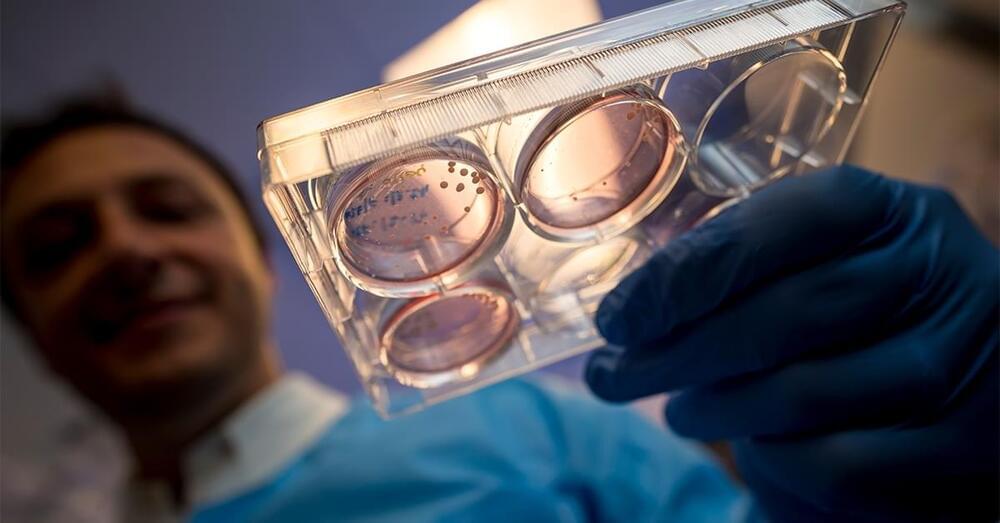A new study by author Cícero Moraes, a Brazilian graphics expert, 3D artist, and designer, reveals how a warrior may have died in the Battle of Gotland that took place between Swedish farmers and the Danish army in 1361.
One of the oldest stars in the Milky Way has been located by astronomers from the University of Warwick.
The oldest rocky and icy planetary system identified is from the oldest white dwarf star in our galaxy and is accreting debris from circling planetesimals, according to a new study published in Monthly Notices of the Royal Astronomical Society on Saturday.
It’s a small comparison percentage, however, it matters.
The big idea.
Simonkr/iStock.
I’m a computer scientist who uses AI to study social science questions. In collaboration with student AI researchers from Carnegie Mellon University, we developed AI methods that reliably distinguish intrusive and unfriendly interruptions from those that are benign. Intrusive interruptions aim to take over a conversation or stifle the speaker, and benign interruptions aim to support the speaker with helpful information or indications of agreement.
The Senmenti will continue to accelerate quickly up to a stated top speed of 124 mph.
Two “super-scooters” completely packed with technology and a second outlandish concept that seek to revolutionize conventional chassis design will be on display at this year’s EICMA motorcycle show in Milan, Italy.
Horwin, an Austrian-designed and China-manufactured electric motorbike company, will debut two wild concepts this year at the show, according to an initial review report published by News Atlas on Thursday.
For what is effectively a maxi-scooter, the Senmenti 0, the super-scooter, boasts incredibly high-performance numbers with about 600 Nm (442.5 lb-ft) of rear-wheel torque.
A “super-scooter” completely packed with technology and a second outlandish concept that seeks to revolutionize conventional chassis design will be on display at this year’s EICMA motorcycle show in Milan.
Solar cells that are stretchable, flexible and wearable won the day and the best poster award from a pool of 215 at Research Expo 2016 April 14 at the University of California San Diego. The winning nanoengineering researchers aim to manufacture small, flexible devices that can power watches, LEDs and wearable sensors. The ultimate goal is to design and build much bigger flexible solar cells that could be used as power sources and shelter in natural disasters and other emergencies.
Research Expo is an annual showcase of top graduate research projects for the Jacobs School of Engineering at UC San Diego. During the poster session, graduate students are judged on the quality of their work and how well they articulate the significance of their research to society. Judges from industry, who often are alumni, pick the winners for each department. A group of faculty judges picks the overall winner from the six department winners.
This year, in addition to solar cells, judges recognized efforts to develop 3D skeletal muscle on a chip; a better way to alleviate congestion in data center networks; a nano-scale all-optical sensor; fiber optic strain sensors for structural health monitoring; and a way to predict earthquake damage in freestanding structural systems.
Traumatic brain injuries might have faded from the headlines since the NFL reached a $765 million settlement for concussion-related brain injuries, but professional football players aren’t the only ones impacted by these injuries. Each year, between 2 million and 3 million Americans suffer from traumatic brain injuries—from elderly people who fall and hit their head, to adolescents playing sports or falling out of trees, to people in motor vehicle accidents.
There are currently no treatments to stop the long-term effects of a traumatic brain injury (TBI), and accurate diagnosis requires a visit to a medical center for a CT scan or MRI, both of which involve large, expensive equipment.
UC San Diego bioengineering Professor Ester Kwon, who leads the Nanoscale Bioengineering research lab at the Jacobs School of Engineering, aims to change that. Kwon’s team is developing nanomaterials—materials with dimensions on the nanometer scale—that could be used to diagnose traumatic brain injury on the spot, be it a sports field, the scene of a car accident, or a clinical setting. They’re also engineering nanoparticles that could target the portion of the patient’s brain that was injured, delivering specific therapeutics to treat the injury and improve the patient’s long-term quality of life.
Using human brain organoids, an international team of researchers, led by scientists at University of California San Diego School of Medicine and Sanford Consortium, has shown how the SARS-CoV-2 virus that causes COVID-19 infects cortical neurons and specifically destroys their synapses — the connections between brain cells that allow them to communicate with each other.
The findings, published in the November 3, 2022 issue of PLOS Biology, also report that the antiviral drug sofosbuvir, already an approved treatment for hepatitis C, effectively inhibited SARS-CoV-2 replication and reversed neuronal alterations in infected brain organoids.
“Vaccines and emerging treatments have reduced the health consequences of COVID-19 in most patients,” said senior study author Alysson R. Muotri, PhD, professor in departments of Pediatrics and Cellular and Molecular at UC San Diego School of Medicine. “But the phenomenon of Long COVID, characterized by persisting symptoms that include neurological impairment, remains poorly understood and without any specific remedy.
Los Alamos National Laboratory researchers have developed a novel method for comparing neural networks that looks into the “black box” of artificial intelligence to help researchers comprehend neural network behavior. Neural networks identify patterns in datasets and are utilized in applications as diverse as virtual assistants, facial recognition systems, and self-driving vehicles.
“The artificial intelligence research community doesn’t necessarily have a complete understanding of what neural networks are doing; they give us good results, but we don’t know how or why,” said Haydn Jones, a researcher in the Advanced Research in Cyber Systems group at Los Alamos. “Our new method does a better job of comparing neural networks, which is a crucial step toward better understanding the mathematics behind AI.”
To foster empathy in conversation, scientists at Kyoto University developed a shared-laughter AI system that reacts properly to human laughter.
What makes something hilarious has baffled philosophers and scientists since at least the time of inquiring minds like Plato. The Greeks believed that feeling superior at others’ expense was the source of humor. Sigmund Freud, a German psychologist, thought humor was a means to let off pent-up energy. In order to make people laugh, US comedian Robin Williams tapped his anger at the absurd.
No one appears to be able to agree on the answer to the question, “What’s so funny?” So picture attempting to train a robot to laugh. But by creating an AI that gets its signals from a shared laughing system, a team of researchers at Kyoto University in Japan is trying to do that. The researchers describe their novel technique for creating a funny bone for the Japanese robot ‘Erica’ in the journal Frontiers in Robotics and AI.
Is a Gerontologist and Clinical Social Worker on a mission to rethink aging, longevity & mental health.
Ms. Anderson was also the former lead singer of the American Rock group, The Donnas (https://en.wikipedia.org/wiki/The_Donnas), where she was the lead vocalist for 20 years, performing throughout the U.S., as well as internationally, and had performances / appearances on major network shows including Saturday Night Live, David Letterman and Late Night with Conan O’Brien.
Ms. Anderson received her bachelor’s degree in Psychology at Stanford University, her MSG, Gerontology from the USC Leonard Davis School of Gerontology, and her Master of Social Work — MSW, from the.
UCLA Luskin School of Public Affairs.
Now pursuing a career as a licensed geriatric social worker, Ms. Anderson hopes to integrate her creative and business experience, with her gerontological knowledge, to better meet the needs of our rapidly aging population.









